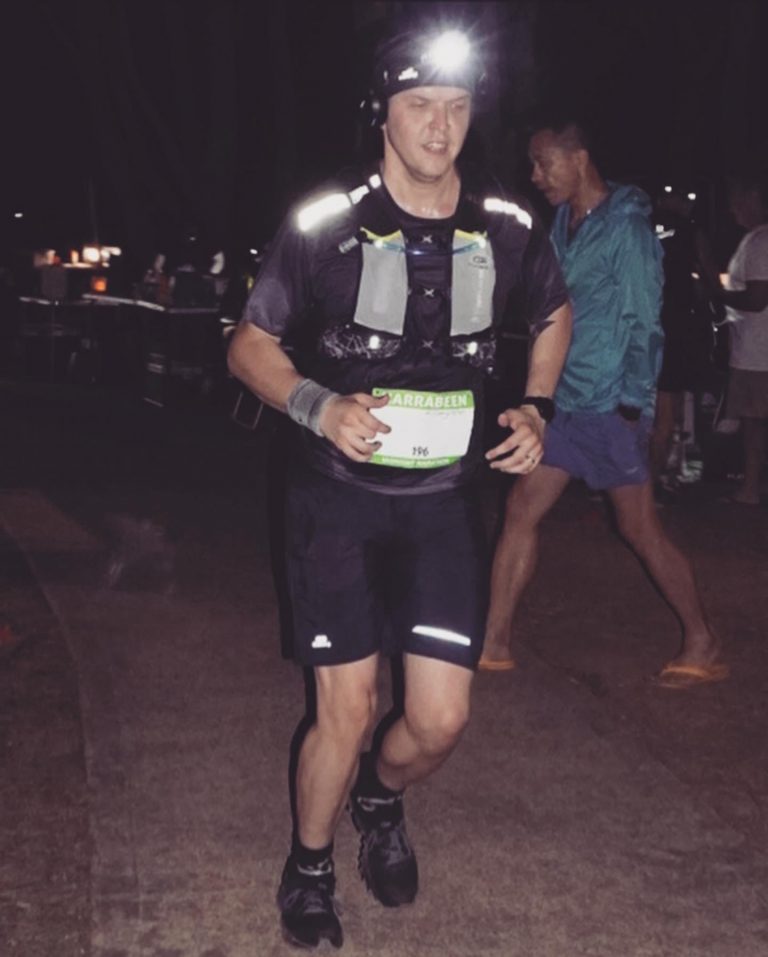For me, there is nothing more devastating and disruptive than when my training or routine is interrupted by anything. Especially since I started training for half ironman, I knew that every day of training is critical to help me improve my overall performance. Most of you would feel the same way, that’s why knee pains for me are such a bother.
 I do more cycling than any other sport between running and swimming because I know that it is a low impact activity too. And simply because, I just love cycling. Besides training for it, I like to cycle recreationally and use it for my own purpose.
I do more cycling than any other sport between running and swimming because I know that it is a low impact activity too. And simply because, I just love cycling. Besides training for it, I like to cycle recreationally and use it for my own purpose.
So when I started feeling some pain on my knees, I was devastated. I actually didn’t know where it came from because I made sure that I was properly situated on my bike and that my bike was propped the way it should be. So was it just a matter of overusing my knees? Or is it actually normal to have a bit of knee pain after cycling?
So like I always do, I did my research and I found out about the small things that contribute to my cycling knee pain and how I can avoid this altogether. Hopefully, this article will help you in your cycling career and shed some light on how you can address this.
Stick around to find out.
Knee Pain After Cycling: What Are The Causes?
Your knees are probably the most overused parts of the body and experience most over-use type of injuries, especially for cyclists. About 25% of professional athletes experience knee pain in the last 12 months. Out of those, almost half are serious which means needing time out from cycling.
On the other hand, recreational cyclists actually fair a lot worse than professionals. In a study of around 500 cyclists, 42% had declared that they had knee injuries, with beginner levels having more knee pains than any of the other levels. This goes to show that a lot of inexperiences goes with the causes of knee injuries. Below are some areas you might experience the pain.
Front Knee Pain or Anterior Knee Pain
Anterior knee pain is one of the most commonly experienced between professional and recreational cyclists alike. Because of the structure of the front area of the knee, cycling overuse injuries happen a lot on this part.
This is usually caused by the pulling of your quads, which is the main muscle group running at the side of your outer leg. This muscle is attached to the shin bone through the patella or the knee cap. When you are pedaling, the force from your quad muscle is transferred to the patella joint, which then forces it into the back thigh. This happens when you bend your knees as you cycle.
While this is more common in more aggressive sports like basketball or volleyball, the lining tendon which crosses and envelopes your patella is prone to becoming inflamed due to overuse in cycling. As you bend and stretch your legs over time, and especially with you’re stretching it at an exerted effort, your patella is pulled and forced causing pain that’s medically known as “patellar compression syndrome”.
You may or may not have experienced this but the level of pain can range from tolerable to a level that can actually get you off your bike on the pavement rolling. So, how do you avoid anterior knee pain?
One thing you can do is to strengthen your vastus madielis oblique or VMO muscle or your inner thigh muscles. There are a lot of simple exercises which you can perform to strengthen it. However, you should know that over time considering age and misuse, the patella can shorten which will make you more prone to anterior knee pain.
Another thing that you can do is to properly adjust your bike saddles and gears. A saddle that is too low or too far or too forward can force your knee into unnatural angles which will put more pressure not only in your front knee but on the other parts as well.
You can also try to straighten your legs a bit more frequently when you are biking. Constant pedaling will force your patella to move and shift sideways more, so study how you can maintain speed while still being able to rest from bending your knees.
It is critical to point out that patella bands are practically useless for patellar compression syndrome. The best thing you can do is to stretch and use foam rolls to stretch your quads and the VMO’s or insides of your thighs.
Back of the Knee Pain or Posterior Knee Pain
The pain at the back of the knee has a lot to do with your hamstrings. While this is the most uncommon, it is also the most straightforward and is caused by only one major thing: it’s mainly due to overextending your knee.
When you overextend, the tendency is that the muscles will become very taut and tight that your knee cannot keep up with the flexing. Usually, this happens when your saddle is way too high. So when you’re overextending, your hamstrings are stretched out thin and pulled— this is where the first pangs of pain will come, followed by the pain where the hamstrings insert at the back of the knee.
Again, one way to avoid this is by checking your bike fit. Your saddle height might need some adjusting: it may be too far back or too high that you’re overworking your back and hamstrings to compensate.
If you’re already experiencing it, foam rolling is again a way to relieve and stretch the muscle back. Icing can also help but do it only once every hour, then foam roll again.
Medial and Lateral Knee Pain
The medial part of the knee is found inside the knee per se while lateral knees are the outsides of your knees. One of the major causes of pain in this area is the mispositioning of the feet. In the case of a cyclist, you most likely experienced this when you first used pedal cleats or you’ve purchased a new pair of shoes or replaced your cleats.
Mostly, the muscles causing pain to you are the ones located on the sides of your knees. To avoid this, you again have to go back to bike fit specifically your cleat positioning. A cleat that is too near the outside of the shoe will cause you lateral pains, while it’s too near the inside of the shoes, it will cause medial pain. All of this is because of the Q angle or how far apart your feet are positioned.
You should be able to position your cleats properly in order to find the right Q angle for you. One tip is to sit on an edge of a table or a chair, with your whole body relaxed. Relax your ankles at 90 degrees and whatever position this may leave you at, should be replicated by the positioning of your cleats.
Also, you should be experimenting with cleats until you fight the right float for you. Too much float or lack of it can also be the culprit of your lateral or medial knee pains.
Iliotibial band
The iliotibial band is slightly similar to the patella. It’s basically a fibrous tissue that is attached to the lateral thigh all the way to the knee from the pelvis. It gets majorly affected when your VMO muscles aren’t strong enough to pull your patella in place, which in turn tightens the iliotibial band.
It’s location basically puts it at a tough spot because as you bend your knees repeatedly, the iliotibial band moves back and forth on the end of the thigh which is the most common area for inflammation. This is usually more common with runners but is experienced by cyclists as well.
One major culprit as to why you may be experiencing pain in your iliotibial band is due to, again, your cleat positioning. Make sure that your toes aren’t pointing inwards too much.
6 Tips To Prevent Knee Pain After Cycling
The things that you do before and on your bike will determine how you’ll feel during and after your cycling sessions. Here are some tips to make sure you lessen the risk of injury and knee pains:
1. Stretch, stretch and stretch some more
When you do any physical activity your muscles tighten and are put under stress. There are many different methods on how you can stretch: use a foam roller or use many stretching techniques and exercises. Some even go as far as hiring a stretch therapist. Whatever works for you, do it.
2. Warm-Up
It is as important to warm up as it is to stretch. Basically, this will get your blood flowing and make sure that your capillaries and nerves are prepared to distribute blood and oxygen throughout your body. Generally, you should be able to warm up for about 15 to 30 minutes prior to your cycling session.
3. Improve Your Spin
One of the best ways to alleviating any type of lower body pains, especially knee pains, is by making sure you pedal with fluidity. Ever notice how professional cyclists seem like they’re pedaling on air? That’s the goal.
As you go up a ride, use a gear that is two teeth lower than usual, basically making it easy for you. Make sure you practice making circles as you pedal and avoiding making ovals.
4. Start Slow and Finish Strong
Coming from a long break, you shouldn’t be tackling 5-hour rides. Take it easy on yourself and start with lower mileage, and gradually increase as you start to pick up momentum with your training.
5. New Equipment = New Adjustments
Be mindful of any change in equipment that you do: be it your shoes, cleats, saddles— anything! Because it will surely have an impact on your body, and most especially on your knees. Test it out first, again by starting slow.
6. Bike Fit is LIFE
If you’re looking at cycling at the competitive level, invest in getting a professional bike fit. This is not the person who sells you the bike and screws the saddle up for you. This is a fitting professional who has tons of experience with bikes and fitting and will help you in the long run. This may cost a bit, but the return is priceless.
 Editor’s Corner
Editor’s Corner
Remember, we all have to start somewhere. I’ve you have just started cycling and are experiencing knee pain which is throwing you off then remember it takes time. It takes time to get used to the saddle, the bike, the new training regime and your muscles need time to attune to that.
Once you’re on a roll with your training plan and taken care of your safety measures you’ll be on a roll!
Conclusion
Everything I’ve mentioned here is minor adjustments you can do daily to ensure that you are cycling at the safest and most convenient set up for you and your knees. It’s very important to understand the structure of your knee, how each pain relates to what muscle, and how you can prevent pains from happening.
It’s also important that you practice the ‘prevention-is-better-than-cure’ concept by making sure that you have a bike that is fit for you. That it doesn’t make you overextend or overuse any of your muscles as you pedal your way through your cycling career.
Lastly, it is very critical to know that if you’re really struggling long-term with your knee pains that the best consultation is not found on the internet but through medical professionals like physiotherapists who can actually give you an assessment of your body. Do not hesitate to seek help especially when your knee pains start to be consistent.
If you’re after more information on cycling injuries check out my post on how you can prevent injury while cycling. If you have decided that outdoor cycling is not your thing then perhaps check out the reviews I’ve done on the best exercise bikes to lose weight. Thats if you prefer to stay indoors whilst remaining fit!
Let me know if you’ve experienced any of the knee pains I’ve described here and what you did to prevent it from happening again. I would love to hear from you in the comments section!
Sources:
1. https://www.active.com/cycling/articles/4-ways-to-fix-anterior-knee-pain-from-cycling/slide-2
2. https://www.cyclingweekly.com/fitness/cycling-knee-pain-everything-you-need-to-know-329957
3. https://rothmanortho.com/stories/blog/Cycling-Knee-Pain

Marko Rakic is a trail runner and fitness enthusiast from Sydney, Australia. He is the lead writer for The Ultimate Primate and believes the best way to live a happy life is through constantly challenging yourself.
